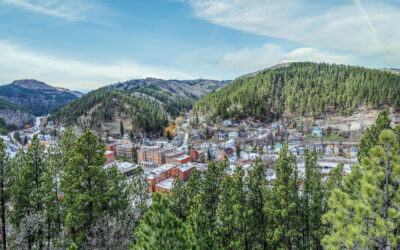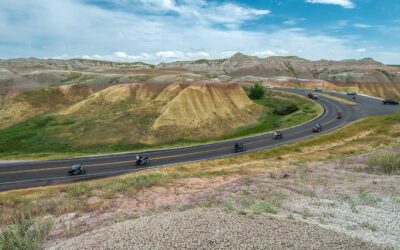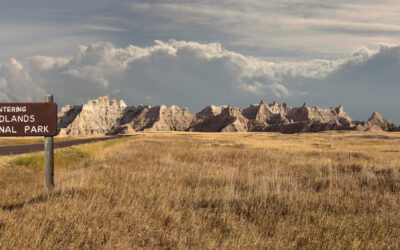Embark on an insider’s journey to the iconic Mount Rushmore, where the faces of four U.S. presidents are carved into granite. This comprehensive guide offers a detailed day-by-day adventure, uncovering the history of the monument, exploring off-the-beaten-path trails, and sharing local secrets for the best experience. Whether you’re a history buff, a hiking enthusiast, or simply in awe of this national treasure, ‘Journey to the Granite Peak: Insider Tours of Mount Rushmore’ is your passport to an unforgettable exploration.
Key Takeaways
- A five-day Mount Rushmore itinerary provides a structured plan to experience the monument’s grandeur, including the Presidential Trail and a unique evening light show.
- Discover the rich history behind Mount Rushmore, from the visionaries who conceived it to the decades of dynamite that shaped the presidential profiles.
- Venture beyond the main attractions to find serenity on lesser-known trails like Blackberry Trail and gain deeper insight into the artistry at Sculptor’s Studio Trail.
- Local tips such as the best times to visit to avoid crowds, savory local eats, and where to find unique souvenirs can significantly enhance your Mount Rushmore experience.
- Extend your adventure with day trips to nearby wonders like Custer State Park, the otherworldly landscapes of the Badlands, and the underground marvels of Jewel Cave National Monument.
Scaling the Heights: Your Day-by-Day Mount Rushmore Adventure
Day 1: Arrival and First Impressions
Your journey begins with the awe-inspiring sight of Mount Rushmore as you approach the Black Hills of South Dakota. The first day is all about settling in and taking in the grandeur of the monument. Arrive early to beat the crowds and enjoy a serene moment with the presidents. As you gaze upon the faces of Washington, Jefferson, Roosevelt, and Lincoln, etched into the granite, the scale and artistry of the sculpture truly hit home.
After checking into your accommodation, consider a leisurely evening stroll around the base of the mountain. This is an excellent opportunity to capture photos and absorb the site’s atmosphere without the daytime bustle. If you’re looking for a more structured experience, a Private Tour of Mount Rushmore can be arranged, offering a personalized and in-depth exploration of this iconic landmark.
To make the most of your visit, here’s a quick checklist for Day 1:
- Confirm your tour bookings and check the weather forecast.
- Visit the Lincoln Borglum Visitor Center to collect maps and learn about the monument’s history.
- Take a walk along the Presidential Trail for closer views of the sculpture.
- Enjoy the local cuisine at one of the nearby restaurants.
- Rest up for the adventures that await in the coming days.
Day 2: The Presidential Trail and Evening Light Show
After soaking in the initial grandeur of Mount Rushmore on your first day, day two promises an up-close encounter with the Presidential Trail. This trail is just a little over a half mile long (1km) and is an easy paved loop that offers various perspectives of the iconic monument. Along the way, informative plaques provide historical context, allowing visitors to appreciate not just the artistry but also the sheer effort that went into creating this national treasure.
As the sun begins to set, prepare for the Evening Light Show, a spectacle that breathes life into the granite faces of the presidents. The amphitheater provides the perfect vantage point for this nightly event, where lights illuminate the sculpture and a ranger’s narration echoes the stories of the four presidents. It’s a moment where history and patriotism converge, leaving a lasting impression on all who witness it.
To make the most of your visit, here are a few tips:
- Arrive early to secure a good spot at the amphitheater.
- Dress in layers as the temperature can drop in the evening.
- Check the National Park Service website for the exact times of the light show as they can vary with the season.
Day 3: Beyond the Faces – Exploring the Hidden Corners
As you embark on Day 3 of your Mount Rushmore adventure, it’s time to venture beyond the iconic presidential visages and delve into the park’s lesser-known areas. These hidden corners offer a serene escape from the more frequented spots and provide a deeper connection with the natural surroundings.
Discover the tranquility of the less-traveled paths as you meander through the pines and granite formations. The park’s extensive trail system allows for exploration of areas that many visitors overlook. Here’s a snapshot of what you might encounter:
- Sylvan Lake: A picturesque spot perfect for a picnic or a leisurely stroll.
- Needles Highway: A scenic drive with stunning rock formations and tunnels.
- Black Elk Wilderness: Explore this rugged terrain for a true wilderness experience.
While Mount Rushmore offers a patriotic experience with its monumental sculpture, the surrounding Black Hills are rich with opportunities for adventure and discovery. South Dakota’s diverse regions, from the Badlands to the national parks, ensure that there’s always something new to explore. Whether you’re captivated by the history or the natural beauty, these hidden corners of Mount Rushmore National Memorial are sure to leave a lasting impression.
Day 4: Hiking Harney Peak and Feeling on Top of the World
The ascent to Harney Peak, now officially known as Black Elk Peak, is a journey that rewards hikers with the highest summit in South Dakota and the Black Hills. Standing at 7,244 feet, it offers an unrivaled view of the surrounding landscape, making it a must-do for any outdoor enthusiast visiting Mount Rushmore.
The trail to Black Elk Peak winds through pine forests and granite outcroppings, presenting a moderate challenge suitable for most fitness levels. Along the way, you’ll encounter the historic stone fire lookout tower at the peak, which serves as a unique landmark and a testament to the area’s fire watch history.
For those seeking a bit more adventure, the spur trails from trail marker #4, such as Little Devils Tower and Cathedral Spires, provide a more strenuous and technical experience. These trails are known for their rock scrambles and require a good level of physical fitness and preparation.
Here’s a quick guide to what you can expect on this hike:
- Start at Sylvan Lake: The trailhead begins here, offering restrooms and water facilities.
- Trail #9: Follow this well-marked trail to reach the summit.
- Distance: Approximately 7 miles round trip.
- Elevation Gain: Around 1,100 feet.
- Time Required: 4 to 6 hours, depending on pace and breaks.
Remember to pack plenty of water, snacks, and wear appropriate footwear. The weather can change quickly at higher elevations, so be prepared with layers and a rain jacket. After conquering Black Elk Peak, you’ll feel a sense of accomplishment that rivals the grandeur of the presidential faces themselves.
Day 5: Farewell Rushmore – Last Views and Departure
As your Mount Rushmore adventure draws to a close, the final day is a time for reflection and last-minute exploration. Capture the early morning light as it graces the presidential faces, offering a different perspective than the previous days. It’s the perfect moment for photographers and nature enthusiasts alike to savor the tranquility before the crowds arrive.
Before you depart, ensure you’ve checked off all must-see spots. Here’s a quick checklist to help you:
- Visit the Sculptor’s Studio for a glimpse into the creation process.
- Stop by the Lincoln Borglum Visitor Center to collect educational souvenirs.
- Take a final stroll along the Avenue of Flags for a multinational farewell.
Remember to check out of your accommodation on time and confirm your travel arrangements. The journey from Mount Rushmore to Rapid City Regional Airport typically takes under an hour, but it’s wise to allow extra time for any last-minute detours or stops you might be tempted to make. Safe travels, and carry the monumental memories with you!
The Carved Giants: Unveiling the History of Mount Rushmore
The Visionaries Behind the Sculpture
The conception and creation of Mount Rushmore are attributed to two key visionaries: sculptor Gutzon Borglum and historian Doane Robinson. It was Robinson’s idea to carve the likenesses of famous figures in the Black Hills region to promote tourism. Borglum, already a renowned sculptor, was commissioned to bring this vision to life. His ambitious plan not only included the presidential faces we see today but also a grand Hall of Records to house America’s most important documents.
Borglum’s selection of the four presidents to be featured was intentional, each chosen to represent key themes of American history: George Washington for the birth of the nation, Thomas Jefferson for the expansion, Theodore Roosevelt for development and conservation, and Abraham Lincoln for preservation through the Civil War.
While Mount Rushmore is a celebrated national monument, it’s important to acknowledge that the Black Hills are sacred to the Lakota Sioux, and the carving of the mountain has been a source of controversy. Nearby, the Crazy Horse Memorial is being constructed to honor the Native American leader and is considered the world’s largest mountain carving in progress, financed by admissions and donations. Visitors to the site can enjoy the Volksmarch and explore the cultural center.
Decades of Dynamite: The Making of a Monument
The creation of Mount Rushmore is a tale of ambition, precision, and explosive force. Over the span of 14 years, from 1927 to 1941, nearly 400 workers sculpted the colossal faces of four U.S. presidents into the granite face of the Black Hills of South Dakota. The project, led by sculptor Gutzon Borglum, involved the careful use of dynamite to remove approximately 450,000 tons of rock, shaping the rough contours of the presidents’ visages.
The process was both dangerous and meticulous. Workers dangled from harnesses, drilling holes into the granite, and placing small charges of dynamite to carve out large sections without damaging the integrity of the sculpture. Precision was key, as each blast was calculated to remove just the right amount of stone. After the bulk of the material was removed, finer details were sculpted with jackhammers and hand tools.
Mount Rushmore’s construction is a testament to human ingenuity and determination. The monument not only celebrates the presidents it depicts but also the spirit of the American people and their ability to achieve monumental tasks. Today, visitors can explore the surrounding natural and historical attractions, including the scenic Custer State Park and the intriguing Minuteman Missile Site, alongside the iconic Mount Rushmore.
Presidential Profiles: A Closer Look at the Four Faces
Mount Rushmore is not just a colossal monument; it’s a shrine to democracy, a testament to the vision and determination of the people who created it. The four faces carved into the granite represent some of the most influential presidents in American history: George Washington, Thomas Jefferson, Theodore Roosevelt, and Abraham Lincoln. Each president was chosen for their significant contribution to the founding, expansion, preservation, and unification of the United States.
George Washington, the first president, symbolizes the birth of the United States. Thomas Jefferson represents the growth of the nation, not least through the Louisiana Purchase. Theodore Roosevelt reflects the development of the United States, particularly in terms of economic policy and the environment. Lastly, Abraham Lincoln stands for the preservation of the Union during its darkest hour, the Civil War.
Here’s a quick glance at the years they served and the states they hailed from:
| President | Term of Office | Home State |
|---|---|---|
| George Washington | 1789-1797 | Virginia |
| Thomas Jefferson | 1801-1809 | Virginia |
| Theodore Roosevelt | 1901-1909 | New York |
| Abraham Lincoln | 1861-1865 | Kentucky/Illinois |
The monument’s grandeur and the legacy of these leaders draw visitors from all over the world to South Dakota’s Western Region, where they can also explore other attractions like the Badlands and Crazy Horse. Whether you’re interested in museums, parks, or outdoor activities, this rugged and adventurous area has something for everyone.
Off the Beaten Path: Discovering the Lesser-Known Trails
Blackberry Trail: A Quiet Escape
Tucked away from the more frequented paths, the Blackberry Trail offers a serene hiking experience at Mount Rushmore National Memorial. This trail is perfect for those looking to immerse themselves in nature without the crowds. As a designated National Recreational Trail, it promises well-maintained paths and ample opportunities to appreciate the local flora and fauna.
The Blackberry Trail isn’t just a walk in the park; it’s an intimate journey through the Black Hills’ unique ecosystem. Here’s what you can expect:
- A gentle terrain suitable for most fitness levels
- A chance to spot wildlife in their natural habitat
- A quieter atmosphere to enjoy the sounds of nature
Remember to wear comfortable shoes and bring water, as the trail can take a couple of hours to complete. Whether you’re an avid birdwatcher or simply seeking a peaceful hike, the Blackberry Trail is a must-visit for any outdoor enthusiast.
Sculptor’s Studio Trail: Insights into the Artistry
The Sculptor’s Studio Trail offers a unique glimpse into the creative process behind Mount Rushmore’s colossal carvings. As you embark on this trail, you’ll encounter the original studio used by Gutzon Borglum, the visionary sculptor of the monument. Inside, visitors can marvel at the scale models and tools that were instrumental in the mountain’s transformation. The studio serves as a tangible connection to the past, providing insights into the meticulous planning and sheer ambition that shaped this iconic American landmark.
The trail itself is an easy walk, suitable for visitors of all ages. Along the way, interpretive signs enrich the experience, detailing the techniques used to carve the granite and the challenges overcome by the workers. For those interested in the finer details of the sculpting process, the trail is a must-visit. It’s not just a walk; it’s a journey through the history and artistry that culminated in the faces we see today.
To enhance your visit, consider these tips:
- Visit early or late in the day to avoid crowds and experience the studio in a more intimate setting.
- Allocate enough time to absorb the information and engage with the exhibits.
- Don’t miss the ranger-led talks for a deeper understanding of the site’s historical significance.
Iron Mountain Trail: Panoramic Views and Wildlife Encounters
The Iron Mountain Trail is a hidden gem within the South Dakota’s diverse natural wonders, offering a serene escape from the more frequented paths of Mount Rushmore. This trail is not just a hiker’s delight but also a wildlife enthusiast’s dream, with opportunities to encounter local fauna in their natural habitat.
As you embark on this trail, you’ll be greeted with sweeping panoramic views that encapsulate the rugged beauty of the Black Hills. The trail’s moderate difficulty makes it accessible for most skill levels, and for those seeking guidance, there are guided tours available to enhance the experience.
Here’s what you can expect on the Iron Mountain Trail:
- A peaceful hike away from the crowds
- Chances to spot wildlife such as deer, elk, and perhaps even eagles
- Breathtaking vistas of the surrounding mountains and forests
- A variety of flora that changes with the seasons
Remember to bring your camera, water, and wear appropriate footwear to make the most of this unforgettable journey.
Local Secrets: Tips and Tricks for the Best Mount Rushmore Experience
Timing Your Visit: Avoiding the Crowds
Mount Rushmore is a marvel of human achievement and a testament to American history, attracting millions of visitors each year. To fully enjoy the grandeur of the monument without the hassle of large crowds, timing your visit is crucial. Early mornings or late afternoons are the sweet spots for a more serene experience. During these times, you’re more likely to find parking and have better opportunities for unobstructed views and photos.
The peak season at Mount Rushmore runs from June through August, when the weather is warm and the skies are clear. While this is the ideal time for weather, it’s also when the monument sees the highest visitor traffic. To avoid the peak crowds, consider visiting in the shoulder months of May or September. Here’s a quick guide to help you plan:
- May: Fewer visitors, cooler weather, some services may not be fully operational.
- June – August: Peak season, expect crowds and longer wait times.
- September: Declining crowds, pleasant weather, full services available.
Remember, weekdays are generally less crowded than weekends, and if you’re an early riser, you’ll enjoy the tranquility that the early hours offer. By planning ahead and choosing your visit time wisely, you can ensure a memorable and crowd-free experience at this iconic landmark.
Must-Try Local Eats and Treats
When visiting Mount Rushmore, the culinary experience is as monumental as the attraction itself. Indulge in the local flavors that make South Dakota a unique culinary destination. From hearty steaks to sweet treats, the region offers a variety of dining options that cater to every palate.
- Gun Barrel Steak & Game House: Known for its wild game and prime cuts, this restaurant is a must-visit for meat lovers.
- Persephone’s Bakery: Start your day with a delightful breakfast or brunch at this popular bakery.
- Cafe Genevieve: Offering a cozy atmosphere, this cafe serves up comfort food with a creative twist.
- Liberty Burger: For a casual meal, enjoy gourmet burgers made from fresh, local ingredients.
Remember to explore South Dakota’s natural wonders through attractions like Mount Rushmore, parks, and museums. Discover unique regions and enjoy hunting, fishing, and entertainment in this diverse state. Whether you’re looking for a fine dining experience or a quick bite, South Dakota’s culinary scene will not disappoint.
Souvenir Shopping: Where to Find Unique Keepsakes
Mount Rushmore is not only a symbol of American history but also a place where you can take a piece of that history home with you. Souvenir shopping here is a delightful experience, offering a range of memorabilia that captures the essence of South Dakota’s rich heritage. From bespoke crafts to locally-made goods, the shops around Mount Rushmore have something for every visitor.
When looking for souvenirs, consider visiting the gift shops within the Mount Rushmore National Memorial. Here, you’ll find a variety of items such as books, postcards, and replicas of the monument. For something more unique, explore the local artisan markets and boutiques in nearby Keystone. These venues often feature handcrafted jewelry, Native American pottery, and custom leather goods that reflect the region’s culture and artistry.
To help you plan your shopping excursion, here’s a quick list of must-visit shops and what they’re known for:
- Mount Rushmore Memories: An extensive collection of books and educational materials.
- Keystone Mercantile: A selection of local foods and handcrafted items.
- Dakota Nature & Art: Fine art and jewelry inspired by the Black Hills.
Remember, purchasing souvenirs is more than just buying keepsakes; it’s about supporting local artisans and preserving the cultural legacy of the area. So, take your time to browse, and you’ll find that perfect memento that holds the spirit of your Mount Rushmore adventure.
Beyond the Busts: Day Trips and Nearby Attractions
Custer State Park: A Wildlife Haven
Nestled in the rolling plains and granite peaks of South Dakota, Custer State Park offers a wildlife experience unlike any other. Home to one of the world’s largest bison herds, the park is a sanctuary for a diverse array of animals and a must-visit for nature enthusiasts.
When traversing the park’s scenic drives, keep an eye out for the majestic bison, often seen grazing in the valleys. Safety is paramount; remember to view these powerful creatures from the safety of your vehicle. For the best wildlife viewing, plan your drive during the early morning or late evening hours, when animals are most active.
Custer State Park is not just about bison; it’s a habitat for a variety of wildlife. Here’s a quick list of animals you might encounter:
- Bison
- Elk
- Pronghorn Antelope
- Mountain Goats
- Bighorn Sheep
While exploring, consider staying within the park for an immersive experience. Canyon Village offers comfortable accommodations with convenient access to the park’s attractions. Whether you’re here for a day or a week, Custer State Park is a natural treasure that promises unforgettable encounters with the wild.
The Enchanting Badlands: A Landscape Like No Other
The Badlands National Park, located in southwestern South Dakota, is a geological marvel that stands in stark contrast to the sculpted faces of Mount Rushmore. This rugged landscape, characterized by layered rock formations, steep canyons, and towering spires, offers a glimpse into a world that seems almost alien in its appearance.
The Badlands are a testament to the power of natural forces, shaped over millions of years by water and wind erosion. Visitors to the park can explore a variety of trails that range from easy boardwalk strolls to challenging backcountry hikes. The park’s striking geology is not only a draw for hikers and photographers but also serves as an important paleontological site, with fossil beds that are rich in ancient mammal remains.
For those planning a visit, here are some key points to consider:
- Best Time to Visit: Late spring to early fall, when the weather is mild and the park’s wildlife, including bison and prairie dogs, is most active.
- Must-See Sights: Pinnacles Overlook, Badlands Loop Road, and the Notch Trail.
- Visitor Facilities: Ben Reifel Visitor Center, which offers exhibits, a bookstore, and ranger-led programs.
South Dakota offers diverse attractions including National Parks, Mount Rushmore, and unique outdoor experiences in different regions. The Badlands, with their otherworldly beauty, are a must-visit destination for those seeking to immerse themselves in the raw and untamed essence of nature.
Jewel Cave National Monument: An Underground Marvel
Nestled within the Black Hills of South Dakota, the Jewel Cave National Monument is a subterranean wonder that beckons explorers and nature enthusiasts alike. Boasting over 200 miles of mapped passageways, it ranks as the third-longest cave in the world, offering a unique glimpse into the geological history of the region. The cave’s intricate system of chambers is adorned with calcite crystals, hence its name, and is home to a variety of cave formations that are both delicate and dramatic.
Visitors can choose from several tour options, each providing a different perspective of the cave’s natural beauty. The Scenic Tour is the most popular, suitable for most ages and fitness levels, while the more adventurous can opt for the Wild Caving Tour, which involves crawling through undeveloped sections of the cave.
- Scenic Tour: A guided exploration of the cave’s stunning chambers and passageways.
- Wild Caving Tour: A challenging adventure for those looking to delve deeper into the cave’s uncharted areas.
To ensure a seamless experience, it’s recommended to check the monument’s official website for tour schedules and any seasonal changes. Remember to dress appropriately for the cave’s constant cool temperature and to wear sturdy shoes. For those looking to explore South Dakota’s attractions including Jewel Cave National Monument, lodging options, parks, regions, and Mount Rushmore, signing up for the state’s newsletter is a great way to stay informed about the latest happenings.






